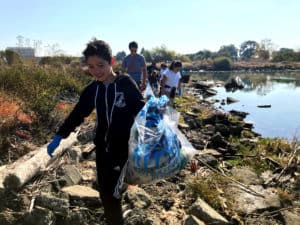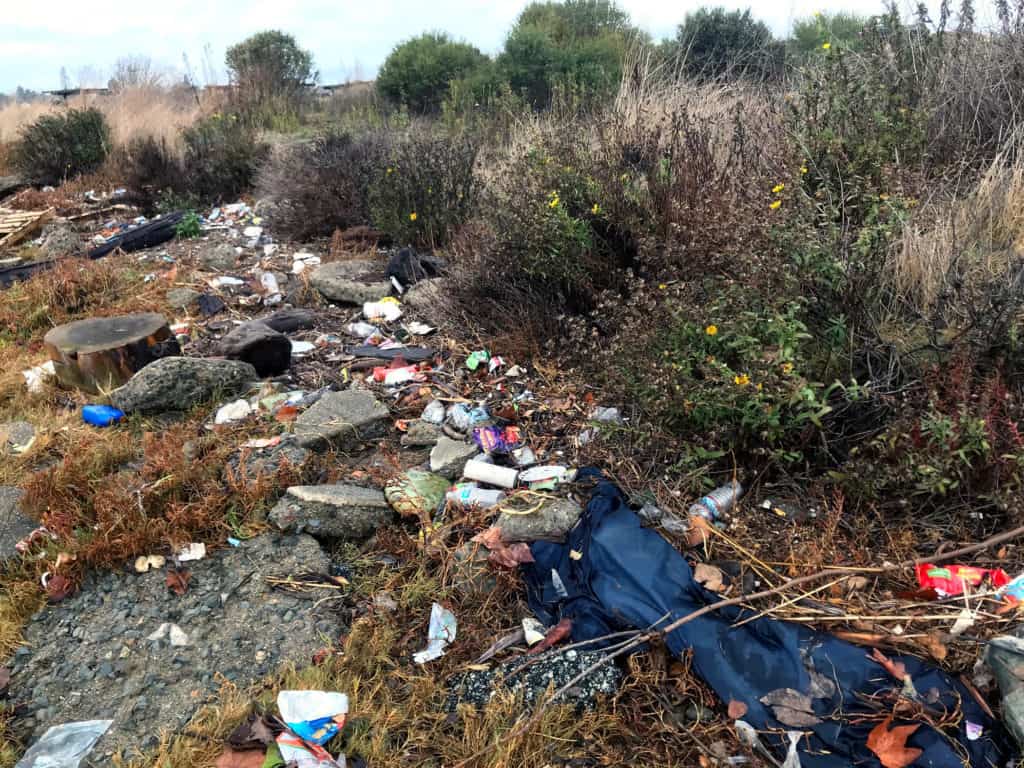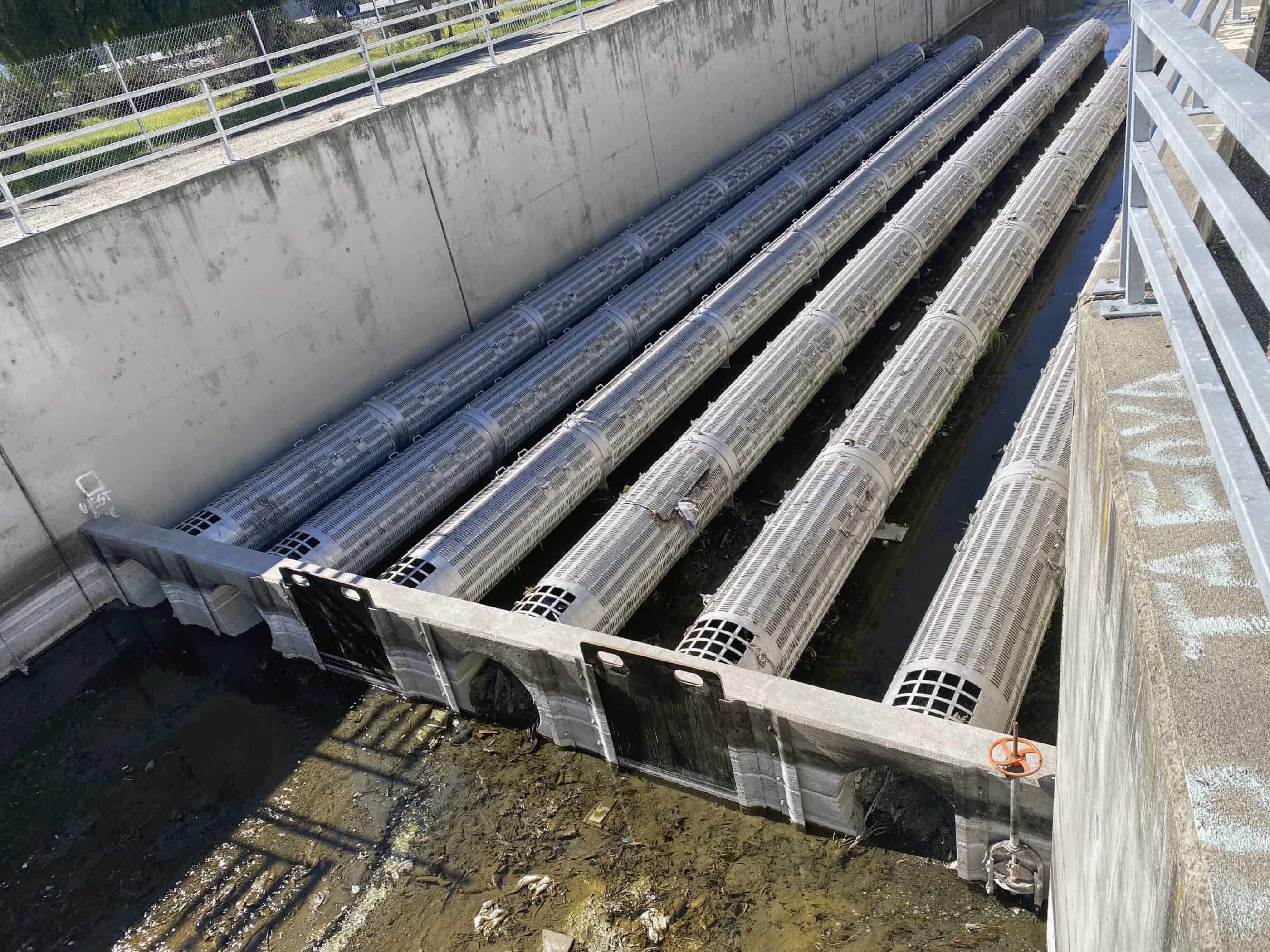Twelve years ago, state environmental regulators mandated that zero trash should be flowing to the Bay from city storm drains by 2022, so fish and wildlife wouldn’t be poisoned by a pollutant they had largely ignored. But today trash is still fouling the Bay shoreline and creeks that flow to the Bay for three reasons.
Cities aren’t screening enough road trash or stopping dumping in creeks. Regulators aren’t enforcing the Clean Water Act. And we’re all still using too much plastic packaging and disposable items that end up in the Bay, not landfills.
In 2010 the SF Bay Regional Water Quality Control Board adopted a Municipal Regional Stormwater Permit (MRP) with new regulations requiring cities to eliminate trash flows from storm drains to the Bay by this month.

When it rains trash on streets flows directly into the Bay, endangering wildlife, accumulating in the food chain, and polluting shoreline parks and beaches. June 2022 felt like plenty of time for cities to fund and install trash capture devices in drains, ban plastic bags and styrofoam takeout food containers, increase street sweeping, and other practices, as the MRP requires.
Some cities did significant work and removed tons of trash; others made little effort. Despite objections from Save The Bay, the Water Board relied on cities self-reporting their progress instead of having regulators inspect directly. In the past, some city reports to the Board went unread until Save The Bay compiled the data. And the Board didn’t strictly enforce its permit on cities falling behind trash reduction targets. The Bay continues to pay the price for cities polluting in violation of the law. Data collected in 2020 by Bay Area cities showed that more than 4 million gallons of trash was sitting in our region’s creeks, and a lot of it came from city storm drains despite the MRP regulations. That’s like 300,000 kitchen trash bags tossed into our waterways.

So much trash is still flowing into the Bay because cities have not invested enough in trash prevention and trash capture, and regulators aren’t doing their job to monitor results, ensure progress, and enforce compliance. Private companies face stricter pollution enforcement than municipal governments. In fact, one of the largest sources of Bay trash is state roads and highways managed by Caltrans, which allows tons of trash to flow into city storm drains in violation of its own stormwater permit. Save The Bay won an unprecedented legal order from the Water Board in 2019 demanding Caltrans “Cease and Desist” its illegal trash pollution, forcing the state agency to clean and screen litter before it gets to the Bay. But Caltrans isn’t meeting its schedule for installing capture devices, and the roads look as trashy as ever.
During the pandemic, Bay Area residents came to value their access to nature and open space even more, including clean creeks, Bay trails, and beaches for safe recreation. Yet our cities still haven’t done what is needed to prevent trash from degrading our local environment as the law requires. Many Bay cities claim that almost zero trash is getting into their storm drains, but the creek data shows that isn’t true. The Regional Board has done little to verify which trash prevention efforts are actually working, though it is clear that cities’ self-reporting is disconnected from reality.
What is working?
Twelve years of the MRP has resulted in some positive outcomes. Some Bay Area cities have leaned into reducing single-use plastics through plastic bag and styrofoam bans, cigarette smoking restrictions (filters are made from plastic), and encouraging restaurants to switch to reusable, recyclable, and compostable alternatives to plastic food ware. Our cities and counties have installed hundreds of trash screens and trash capture devices in storm drains and channels throughout the region, and have increased street sweeping in high trash areas.

But the scale of implementation has not matched the severity of our region’s trash problem, and the Regional Board has just renewed the permit without significantly strengthening it. They also deferred the zero trash goal without stronger measurement, monitoring, and enforcement provisions. The Board also has failed to tackle the other major sources of trash in the Bay. The growing unhoused population in our region lacks access to sanitation and trash cans, so pollution from encampments – especially those along our creeks – flows directly into the Bay. A huge amount of trash also ends up in our creeks through illegal dumping, and unhoused encampments are target locations that unjustly shifts blame to those living there. The Regional Board’s responsibility to ensure clean water and a healthy Bay means that it must play an active leadership role in bringing partners and resources together to solve these complex and challenging problems. Save The Bay will continue helping cities prevent trash from polluting the Bay, and pressing state regulators to enforce the clean water laws that should be protecting people and wildlife.
Ultimately, we all need to consume and dispose of less plastic and other waste – our throwaway society produces enormous amounts of waste that pollutes land and water and takes enormous energy to produce and transport. California voters this Fall will decide on a ballot initiative to reduce single-use plastic packaging and foodware; require that more of it is recyclable, reusable, refillable or compostable by 2030; and improve convenient recycling and ban Styrofoam food service containers.

















































